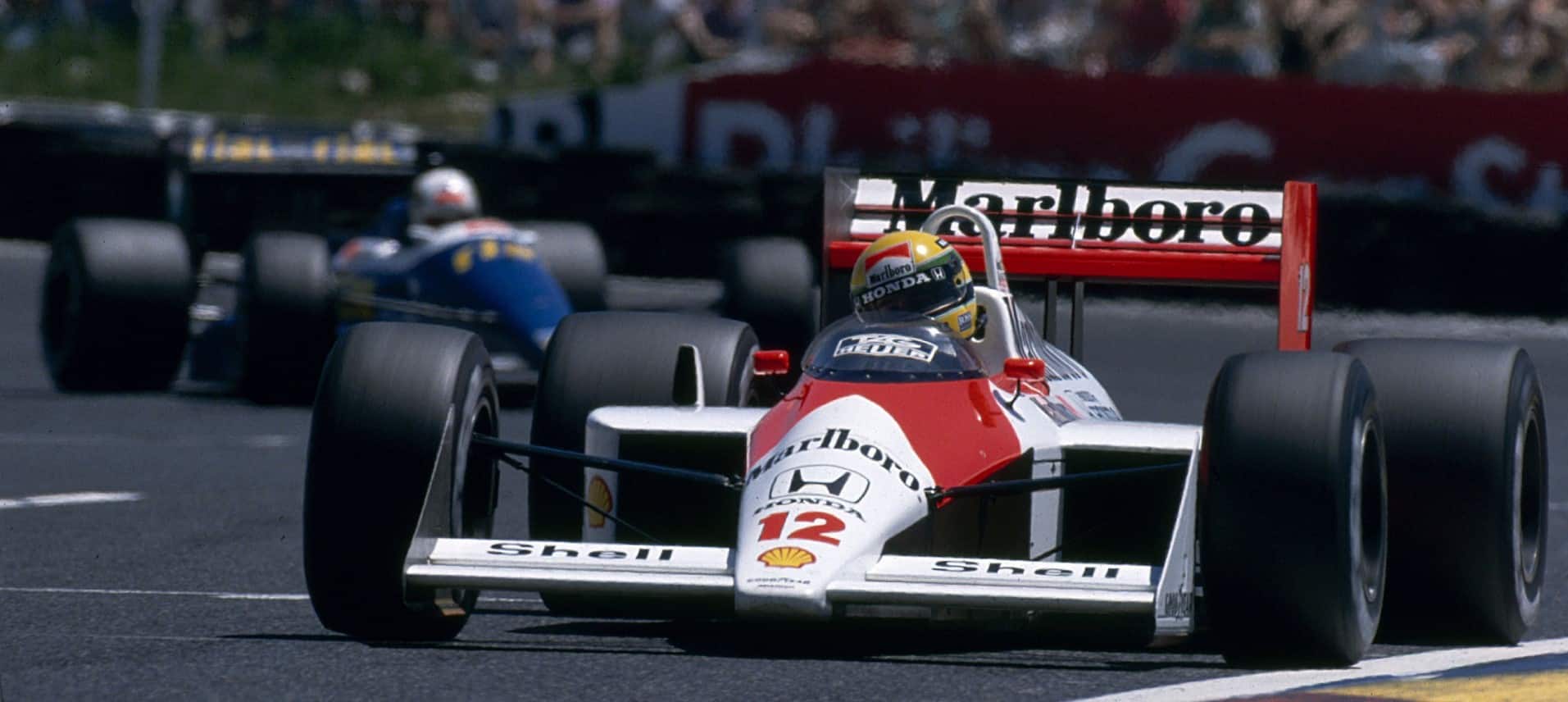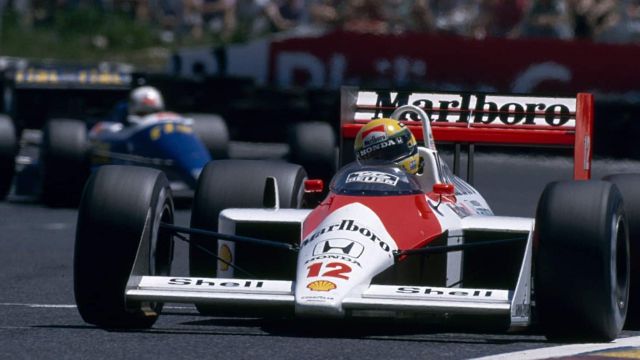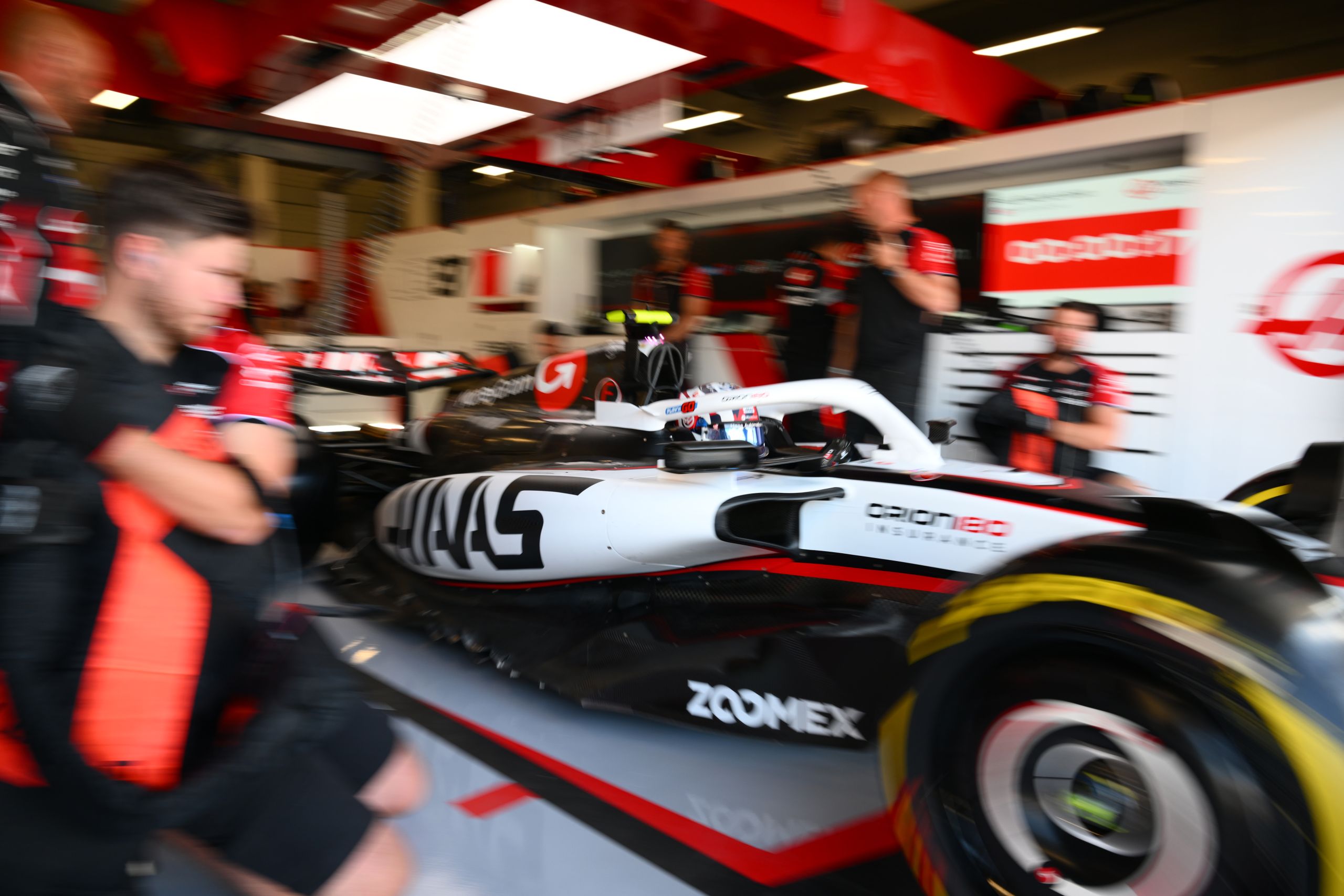The Golden Era Of Turbos In Formula 1


Turbos in Formula 1 aren’t a new concept, as some of the most powerful and iconic Formula 1 vehicles of all time came to the fore in the mid-1980s with flame-spitting turbo engines that were the height of machismo and thrills. But what were the mechanics that created this phenomenon, and why did they dominate the F1 scene the way they did?
In short, turbocharging is a term that describes the forcing of higher-density air into internal combustion engines as a means of boosting power output. A turbocharger accomplishes this task: that is, a turbine that is powered by the engine’s exhaust gases. This turbine drove a compressor that pumps this pressurized air into the inlet manifold. Boost pressure is regulated by mechanisms like wastegates and boost controllers to optimize performance and prevent engine damage. This process, in turn, means that the engine’s cylinders receive a much higher mass of air in the same amount of space during each intake stroke. This complex process produced much higher power on ignition.
During the turbo era’s early days, the rule of thumb was that a 1,500cc turbo engine was equal to a 3,000cc engine with normal aspiration. Engine capacity limits have changed over the years, impacting the designs and performance of racing engines. This rule quickly led engineers to create ever more efficient and powerful machines that made these powerhouses as massively popular as they were.
The “father” of the turbo era was Jean-Pierre Jabouille, a driver well-known for debuting the Renault RS01 at the 1977 Silverstone GP after thousands of testing miles. This process was not without its challenges, either: he could not achieve a finish with his failed RS01 until the seventh start.
Turbo’s Biggest Problem: Turbo Lag
While turbos are fondly remembered for their incredible speed and power, the lag was a large caveat for this type of internal combustion engine. Lag, or the delay between the driver stepping on the throttle and the turbo kicking in, was an intrinsic part of all turbo cars. This caveat was reduced significantly with the introduction of twin-turbo engines in 1979. Less than two years after racing with the first turbo vehicle, Jabouille was able to take a historic victory at the Dijon-Prenois GP in France. Engine development played a crucial role in overcoming the challenges of turbo lag, with advancements in engineering significantly improving performance and reliability.
It took time for Renault’s competitors to catch up. The Ferrari V6, for example, was shown at the 1980 Italian Grand Prix but didn’t race until March of 1981. BMW would present a turbo car in January 1982, while Honda and Alfa Romeo would follow suit in spring 1983, one month apart. By August, TAG/Porsche followed suit with their own car. While all were impressive to behold, all possessed the same teething problems.
Brabham and McLaren designer Gordon Murray reminisces about the legendary BMW in its infancy, stating that it had a truck turbo that was both high-powered and incredibly fast. “If you’d got somebody who hadn’t driven one, they were completely lost, particularly with our four-cylinder,” he continued.
Murray attributed this difficulty to the lack of engine braking and the power coming in after the lag being much steeper than might otherwise be expected. “The lag was reduced constantly, but it never went away.”
1,500cc turbo engines in qualifying trim were quoting as much as 1,000 bhp and even more. Output was measured in dynamometers, however, which meant that the readings weren’t the most accurate, as most of the dynamometers went up to 1,000 or 1,100 bhp.
Extrapolating from the input data on the dynos, Paul Rosche’s BMW may have reached as high as 1,300 bhp in qualifying trim, Murray says. He also mentioned that Nelson Piquet claimed that he would come out of the corner, aiming at the middle of the circuit, and floor it while trying to stay centered on the track. This strategy was employed was during a period when F1 drivers used large rear wings even on quicker tracks. Higher engine speeds, usually around 3,500 RPM, helped reduce turbo lag and improve performance, enhancing driving dynamics significantly.
Turbo Engines Dominate The F1 Scene
Porsche quickly mastered the technology behind turbo engines. Their TAG engine significantly increased engine power, pushing McLaren to victory in consecutive titles from 1984 to 1986. The TAG/Porsche chassis was not the most impressive in terms of pure horsepower. That honor was reserved for what many consider the ultimate turbocharged F1 stock car, the 1986 Benetton BMW.
1986 was unique in that it was the only season of Formula 1 racing when all cars had turbo engines. Normally-aspirated units had been written out of the rules entirely. Another legendary racer that season, Teo Fabi, dominated Monza and Osterreichring, some of the quickest tracks out there, in his B186. The next year, his vehicle switched to a normally-aspirated unit that led to lower placements at more challenging circuits. Fabi placed 13th in Adelaide, 16th at Monaco, and 17th at Detroit in 1987.
Fuel efficiency was a crucial advantage of turbocharged engines, especially in endurance racing.
Unfortunately, the fun would quickly come to an end, as the FIA announced that normally-aspirated 3.5-liter engines would become regulation once more from the 1989 season onward. These new units tested their mettle against turbo vehicles during the 1987 and 1988 seasons. On top of that, more restrictions were put on turbo engines:
By 1986, teams could only use 195 liters of fuel during races.
The next year, a 4 bar pop-off valve was introduced to limit turbocharger pressure readings.
In 1988, not only were pop-offs reduced to 2.5 bar, but turbo engines also had a much lower fuel limit of 150 liters.
The End Of The Golden Turbo Era In Formula 1
By the late 1980s, engineers and designers at Honda had reached the pinnacle of turbo engine efficacy within set parameters. The vehicle that perfected its use during this period was a McLaren chassis pioneered by Murray, Ayrton Senna, and Alain Prost that was indomitable during the 1988 season. Unfortunately, many other teams struggled to maintain an upward trend optimizing lap times and speeds compared to earlier turbo engine vehicles. The transition from turbocharged to naturally aspirated configurations significantly impacted the performance of internal combustion engines, particularly in overcoming power losses due to altitude-related air pressure and oxygen deprivation.
According to Murray, while engine management and telemetry improved, the increase in sophistication could not match up to the golden age of turbo engine vehicles, which he considered some of the greatest F1 cars of all time based on their power-to-weight ratios. The introduction of hybrid electric systems, including the motor generator unit, specifically the MGU-K (Motor Generator Unit – Kinetic) and MGU-H (Motor Generator Unit – Heat), played a crucial role in enhancing engine performance and efficiency, especially during braking and acceleration.
While Senna got his hands on the title, Prost would make history after winning the 1988 Australian Grand Prix. He won 35 times with TAG/Porsche, Renault, and then Honda’s powerhouse vehicle, with which he won the last-ever turbo race.
By the time of the 1989 Brazilian Grand Prix, all cars were required to have standard V8, V10, and V12-horsepower engines with 3.5-litre aspiration. The turbo era is a truly unforgettable one for F1 enthusiasts and veteran drivers and engineers alike.
The Re-introduction of Turbo Engines in Formula 1
The re-introduction of turbo engines in Formula 1 marked a significant shift in the sport’s approach to power and efficiency. Turbo engines were first introduced to Formula 1 in the late 1970s, with Renault pioneering the use of a turbocharged 1.5-liter V6 engine. This era saw incredible advancements in power output, with some engines producing over 1,000 horsepower in qualifying trim.
However, due to escalating costs and safety concerns, turbo engines were banned after the 1988 season, leading to a period dominated by naturally aspirated engines. This changed in 2014 when Formula 1 re-introduced turbocharged engines as part of a new hybrid power unit format. The new regulations mandated the use of 1.6-liter V6 turbocharged internal combustion engines paired with energy recovery systems.
The modern turbo engines are significantly more advanced than their predecessors. They incorporate sophisticated electronics, advanced materials, and innovative engineering solutions to achieve remarkable levels of efficiency and performance. For example, the Motor Generator Unit-Heat (MGU-H) recovers energy from the turbocharger, converting heat energy into electrical energy, which can then be used to power the car or stored for later use.
This re-introduction was driven by a need for Formula 1 to stay relevant in an automotive industry increasingly focused on sustainability and efficiency. The hybrid turbo engines deliver impressive power and reduce fuel consumption and emissions, aligning with global trends towards greener technologies.
Looking Ahead: The Role of Internal Combustion Engines in Formula 1 Turbocharged Engines
Internal combustion engines (ICE) have been a cornerstone of Formula 1 engineering, especially since the introduction of turbocharged units. In 2014, Formula 1 adopted 1.6-liter V6 turbocharged internal combustion engines as part of a hybrid power unit. These engines are designed to maximize efficiency and performance, integrating advanced technologies such as double-overhead camshafts (DOHC) and sophisticated turbocharging systems.
The internal combustion engine in a Formula 1 car is not just about raw power; it is also about energy recovery and efficiency. The current power units include a Motor Generator Unit-Kinetic (MGU-K) and a Motor Generator Unit-Heat (MGU-H), which work alongside the ICE to recover energy from braking and exhaust gases, respectively. This hybrid approach allows for a significant reduction in fuel consumption while maintaining high-performance levels.
Looking ahead, the regulations set for 2026 will continue to evolve the role of internal combustion engines in Formula 1. These future power units will feature a 50:50 split between electric power and internal combustion, further pushing the boundaries of what these engines can achieve in terms of efficiency and sustainability.
In conclusion, internal combustion engines remain a vital component of Formula 1’s turbo engines, driving innovation and performance while adapting to modern demands for efficiency and sustainability.





